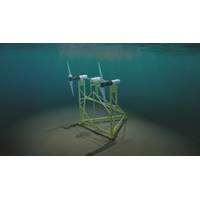
EU-Backed Project to Unlock Tidal and River Energy Potential
holds the promise of creating 400,000 high-value jobs by 2050, revitalizing coastal communities with histories rooted in shipbuilding, fishing, and oil and gas industries.Project partners include, ORPC Ireland with RivGen technology, SeaQurrent, ÉireComposites Teo, Foras na Mara – Marine Institute, Bretagne Développement Innovation, Geemente Ameland, and others
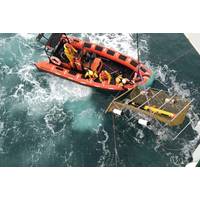
... And the Winner is ...
AUV Barabas was used to investigate the impact of clay tectonic deformations on the construction of offshore wind farms in the Belgian part of the North Sea (BPNS). The image captures the complexities of operating in this dynamic and challenging marine environment.Image by Rita Novo, VLIZ - Flanders Marine Institute, taken in the Belgian Part of the North Sea (BPNS), 2023 / Image courtesy Teledyne MarineWinner Best Data AwardThis prize honors a photograph that shows the real-life effects of data collection on marine science. Here’s a big congratulations on the image and the high-quality data it represents&

Ship Design & Construction: Laurie Balan, COO, Genoa Design
any other province, Newfoundland & Labrador's history is linked to the sea. We are uniquely positioned as the gateway to the Arctic as well as to Western Europe. Our schools are noteworthy in terms of how they support the industry. Our schools are second to none, whether it's MUN, the Marine Institute, College of the North Atlantic or other private colleges in the province. Graduates are recognized as top in their field and are ready to work anywhere in the world when they graduate. We have outstanding companies here, and you don't have to look far to find locally grown companies like
![“Our province has been shaped by the Atlantic Ocean. It can be extremely cold, extremely unforgiving. If it works here, it will work anywhere. The technology we [develop and] use here can be adapted to anywhere else in the world. We are adaptive, we're nimble, we're problem solvers. And at the end of the day, we are collaborative."
Minister Andrew Parsons, Industry, Energy & Technology, Newfoundland & Labrador, Canada. Photo courtesy the office of Minister Andrew Parsons](https://images.marinetechnologynews.com/images/maritime/w200h200padcanvas/province-been-shaped-153427.jpg)
NL Government Helps Power Regional Maritime, Offshore Energy, Subsea Tech Cluster
behind Alberta and Saskatchewan.“Overall, our economy this year is expected to grow, the GDP growth is expected to be about 5% this year, which is certainly music to the ears of our finance minister, Siobhan Coady,” said Parsons.The Launch is a state-of-the-art living lab operated by the Marine Institute in Holyrood. Photo courtesy the office of Minister Andrew ParsonsThe "Crown Jewels" of the ProvinceThe Newfoundland & Labrador cluster is unique in the way that government, industry and academia mutually support one another. In assessing the ‘spaces and places’ that
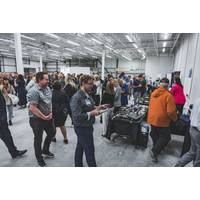
Technology Time - Newfoundland & Labrador Style
. techNL is a not-for-profit membership association that enables a thriving innovation-driven economy in NL, providing visibility, business growth services and a collective influential voice. The maritime sector offers immense potential for technological advancement and innovation, supported by the Marine Institute, Canada’s Ocean Supercluster, Genesis, Launch and more recently, Co. Innovation Centre, said CEO Florian Villaumé. “What excites me most,” he noted, “is the collective drive within this ecosystem to foster collaboration and accelerate technological development
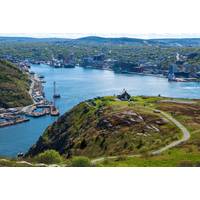
Spaces & Places: Inside the ‘Crown Jewels’ of Newfoundland & Labrador
returning safely. “We are used to icebreakers being strongly and heavily built, but with climate change, do they need so much reinforcement? [All that] extra weight could be cargo,” he pondered.MUN is also home to The Launch, a cutting-edge living lab operated by the university’s Marine Institute. Located in Holyrood, a bay where the North Atlantic collides with the rugged coast, The Launch serves as the ideal setting for technology testing, training and ocean research in a safe, near-Arctic environment. “It's an amazing facility and community,” said Parsons. “It'
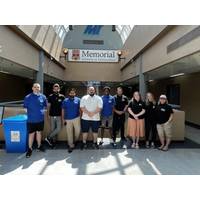
Students Spend Summer Mapping Seafloor for Seabed 2030
have taken part in a summer-long paid internship facilitated by TCarta which resulted in 39,304km² of 10m-resolution satellite-derived bathymetry across four areas of interest worldwide, all within eight weeks. The participants were either recent graduates or current students in the Marine Institute Ocean Mapping program of Memorial University, Canada. The mobilization was a collaborative effort among TCarta, Memorial University and The Nippon Foundation-GEBCO Seabed 2030 Project, which aims to inspire the complete mapping of the seafloor by 2030.The bathymetry was generated for the

Simulation Training Profile: Chris Hearn, Memorial University
of how this unique regional cluster has parlayed its geographic locale and harsh, unique operating conditions into world leadership in the maritime, offshore energy and subsea tech spaces. An alumni, a professional mariner and now the Director of the Center for Marine Simulation, the Fisheries & Marine Institute at Memorial University, Chris Hearn has his hand on the pulse of the tectonic changes reshaping maritime and offshore energy simulation training today. From artificial intelligence to autonomy to fuel transition, Hearn and the Center for Marine Simulation are invested today to help train the
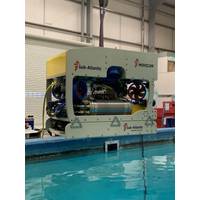
FET Observation-class ROV for Memorial University
Forum Energy Technologies (FET) secured a contract from the Memorial University of Newfoundland to supply an electric observation-class remotely operated vehicle (ROV) to its Fisheries and Marine Institute (MI), School of Ocean Technology.The primary function of the Sub-Atlantic Mohican ROV system will be to support ocean research, while it will also be used for pilot technician training. For ocean research operations, the ROV will be required to carry a payload skid for navigation, equipment and sensors, as well as be capable of manipulation and intervention.The Mohican is equipped for inspection


 February 2025
February 2025





